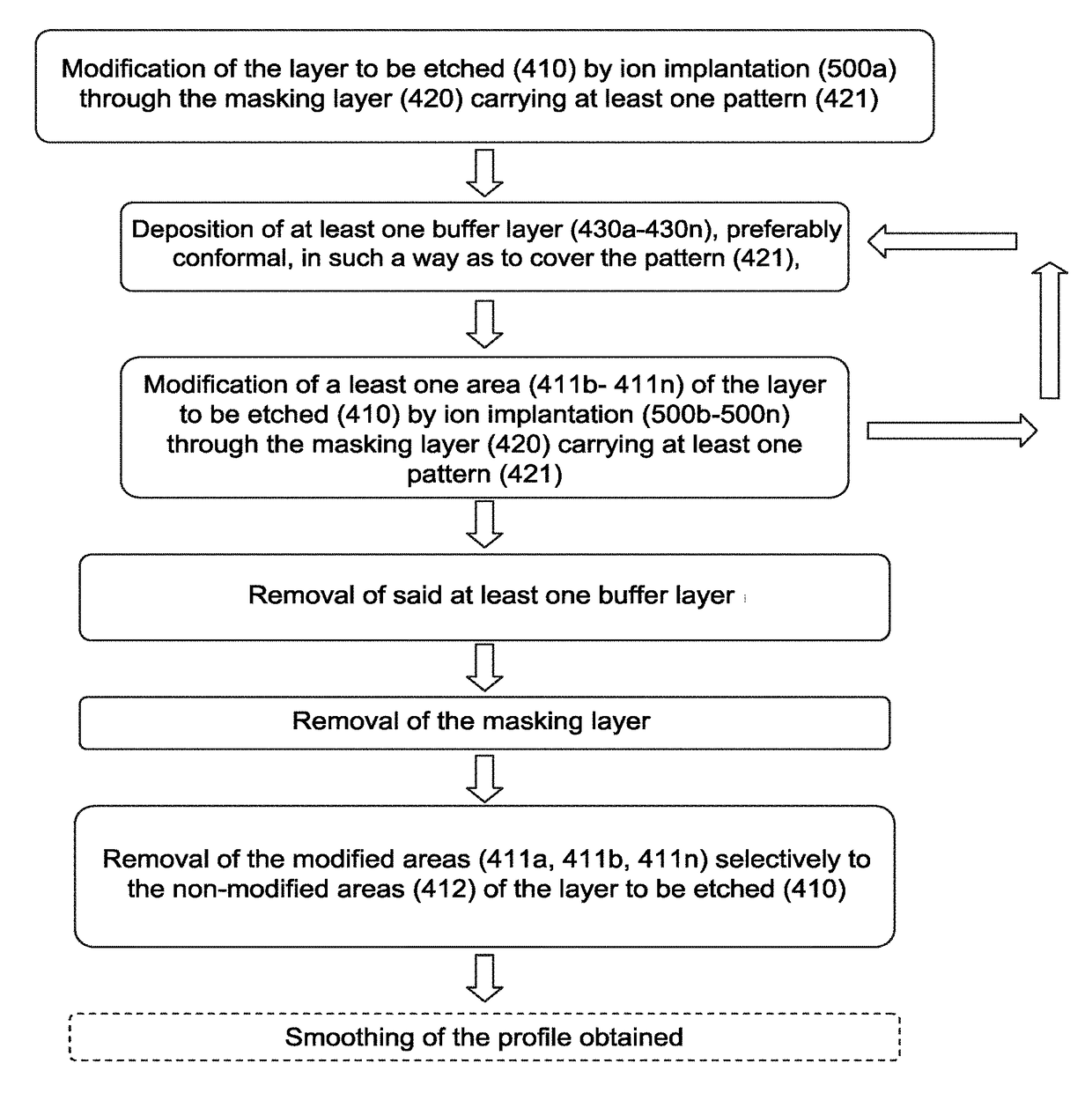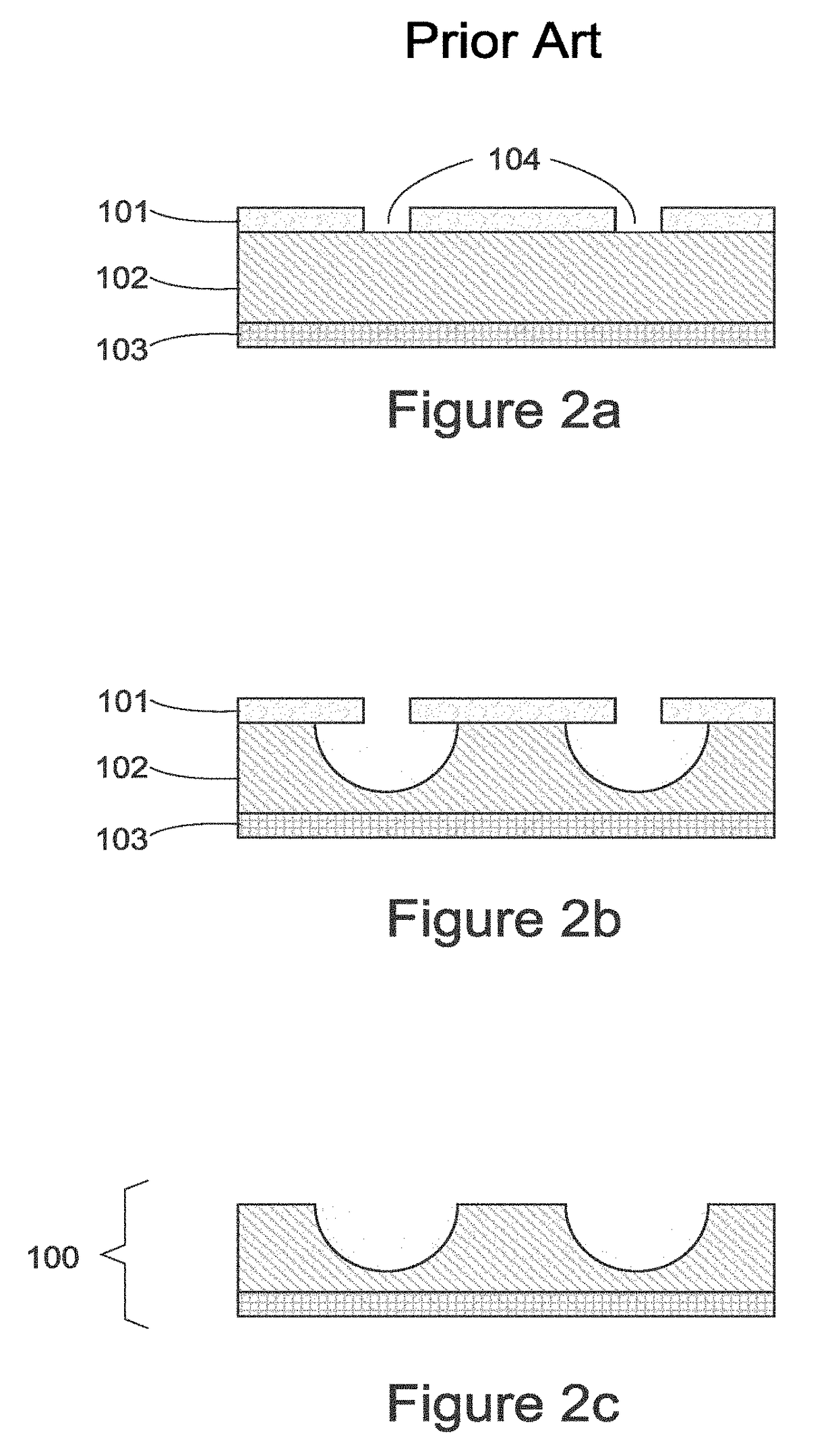Method for producing patterns
a pattern and pattern technology, applied in the field of structures, can solve the problems of reducing the dimensions of patterns, limiting the choice of surface profiles that can be obtained, and reducing the accuracy of techniques, etc., to achieve the effect of not consuming the thickness of the masking layer, simple and reliable solution, and great precision
- Summary
- Abstract
- Description
- Claims
- Application Information
AI Technical Summary
Benefits of technology
Problems solved by technology
Method used
Image
Examples
Embodiment Construction
[0048]Before beginning a detailed review of embodiments of the invention, hereinafter are mentioned optional characteristics that can possibly be used in association or alternatively.
[0049]According to an embodiment, before the step c) of removing said at least one buffer layer, several times, more preferably at least two times and more preferably at least three times, a sequence of steps is carried out, with each sequence comprising the steps b1) and b2), with a buffer layer deposited during a given sequence being stacked as such on a buffer layer deposited during a sequence preceding the given sequence.
[0050]As such the buffer layers deposited are stacked on one another as the sequences unfold.
[0051]According to an embodiment a buffer layer deposited during a given sequence has a thickness that is identical to the thickness of a buffer layer deposited during a sequence preceding the given sequence. This avoids having to adjust the thickness to be deposited for each buffer layer, w...
PUM
 Login to View More
Login to View More Abstract
Description
Claims
Application Information
 Login to View More
Login to View More - R&D
- Intellectual Property
- Life Sciences
- Materials
- Tech Scout
- Unparalleled Data Quality
- Higher Quality Content
- 60% Fewer Hallucinations
Browse by: Latest US Patents, China's latest patents, Technical Efficacy Thesaurus, Application Domain, Technology Topic, Popular Technical Reports.
© 2025 PatSnap. All rights reserved.Legal|Privacy policy|Modern Slavery Act Transparency Statement|Sitemap|About US| Contact US: help@patsnap.com



